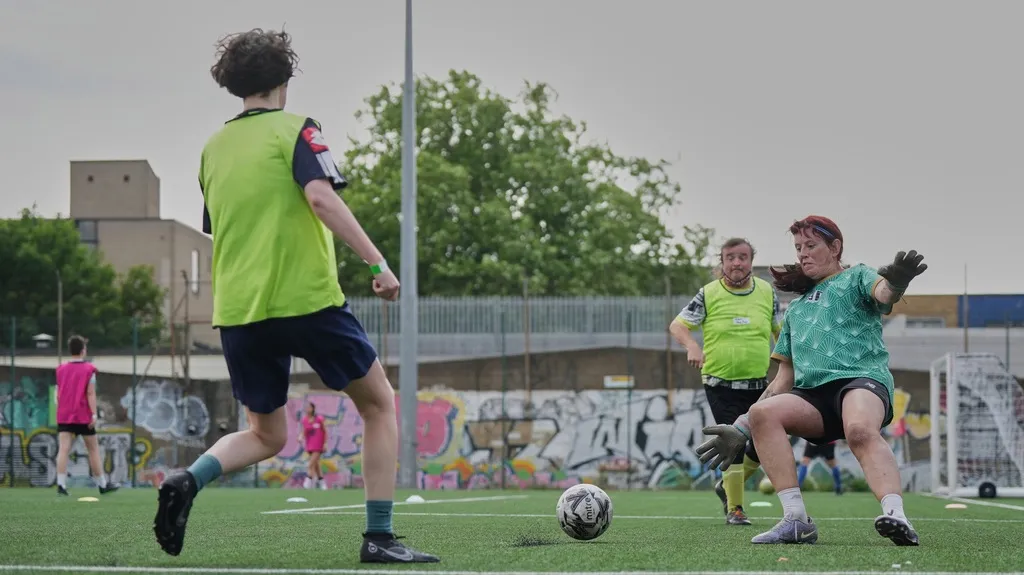December 11, 2009
Third-Generation Hispanics More in Favor of Marriage Equality
Kilian Melloy READ TIME: 3 MIN.
WASHINGTON (AP) - Young Hispanics born in the U.S. are less likely to drop out of school and live in poverty than young Hispanic immigrants, but they have higher exposure to gangs and violence, an independent research group says.
The study being released Friday by the Pew Hispanic Center paints a mixed picture of assimilation for a fast-growing group of U.S. citizens starting to wield their political rights: more education and job advancement, but also social problems.
The survey and analysis of census data found the high school dropout rate among all Hispanic youths ages 16-24 was 17 percent, roughly three times higher than white youths and close to double the rate for black youths. But when broken down by second-generation Hispanics born in the U.S., the dropout rate falls to 8.5 percent, roughly the same for youths of all races.
U.S.-born Hispanics also had improvements in economic well-being. About 29 percent of young immigrant Hispanics lived below the poverty line, more than twice the rate for young whites in a similar age range (13 percent) and slightly worse than young blacks (28 percent). But among second-generation Hispanics, that figure living below the poverty line improves to 19 percent.
On the other hand, the American-born youths were twice as likely as their immigrant counterparts to have ties to a gang or to have gotten into a fight or carried a weapon in the past year. About 40 percent reported they were either a gang member or knew a friend or relative who was, compared to 17 percent for those who were foreign-born.
The U.S.-born Hispanics also were more likely to be in prison and perceive instances of racial discrimination.
"It is clear that many of today's Latino youths, be they first or second generation, are straddling two worlds as they adapt to the new homeland," according to the Pew report.
The findings come as growing numbers of children and grandchildren of Hispanic immigrants are being born in this country. Currently, two-thirds of Hispanics ages 16-25 are U.S.-born citizens. Due to high birth rates, these U.S. citizens will fuel a doubling of the overall Hispanic population to 30 percent by 2050.
In electoral terms, Latinos have had less clout at the polls than their numbers would suggest.
"Their share of the electorate has not grown nearly as much as their share of the population," said Paul Taylor, director of the Pew Hispanic Center. "Now, with the coming of age of this big generation of U.S.-born children of immigrants, that's all about to change."
The changes could shift the nation's political discourse. According to the study, young U.S.-born Hispanics tend to be less conservative than immigrants, at least on cultural issues. Nearly two-thirds, or 65 percent, of foreign-born youths say abortion should be illegal, compared to 58 percent of those in the second generation and 39 percent in the third generation or higher.
About 40 percent of young foreign-born Hispanics say they attend church weekly, while roughly one-third of Hispanics in the second- and third-generation and higher say the same. On gay marriage, about 40 percent of young immigrants and second-generation Hispanics say they favored it, compared to 52 percent for Hispanics from the third generation and higher.
Other findings:
-Young Hispanic immigrants are less likely to be unemployed than their U.S.-born counterparts, but they are largely confined to lower-skill occupations such as food preparation and serving, grounds cleaning and maintenance and construction.
-Second-generation Hispanic women are less likely than immigrants to give birth as a teen, but rates are still high: 16 percent for second-generation women ages 18 and 19, compared to 26 percent for immigrants. In all, 26 percent of Hispanic women were mothers by the time they reached age 19. That's compared with 22 percent of blacks, 11 percent of whites and 6 percent of Asians.
-U.S.-born Hispanic youths are generally optimistic about their future. About 78 percent of third-generation young Hispanics and 74 percent of those in the second generation say they will be better off than their parents financially. That's compared to about 66 percent for young Hispanic immigrants.
-Three percent of Hispanic men ages 16 to 25 were in prison in 2008, compared with 7 percent of young black men and 1 percent of young white men. U.S.-born Hispanic young men were more likely than their foreign-born counterparts to be incarcerated - 3 percent vs. 2 percent.
Pew based its findings on 2008-2009 data and interviews with 2,012 Hispanics ages 16 and older by cell phone or landline from Aug. 5 through Sept. 16. The survey's margin of error is plus or minus 3.7 percentage points for all respondents, higher for subgroups.
Kilian Melloy serves as EDGE Media Network's Associate Arts Editor and Staff Contributor. His professional memberships include the National Lesbian & Gay Journalists Association, the Boston Online Film Critics Association, The Gay and Lesbian Entertainment Critics Association, and the Boston Theater Critics Association's Elliot Norton Awards Committee.






